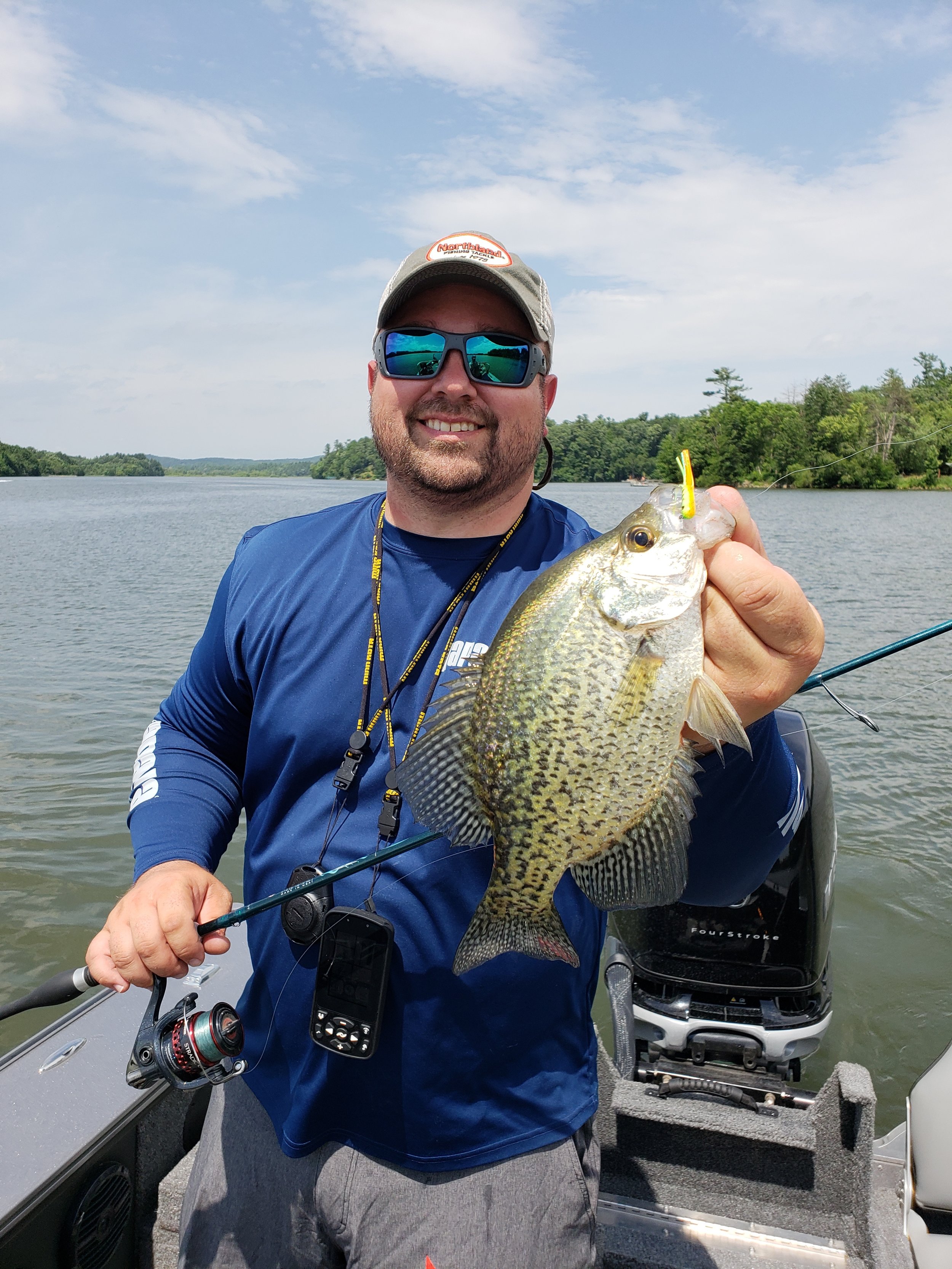Matt R. asks:
I saw St. Croix released their new CCI rods. I just had a couple of questions in regards to them.
First, as far as for panfish what rod would you recommend for fishing tungsten flys, jigs, smaller spoons, and number three rip n raps. I would also like to be able to see the bite.
The other rod would be for walleyes. This I would be fishing number 4 rip n raps, 1/8 spoons, jigging raps. Which one of the CCI’s would you suggest for this type of fishing. Thanks for your reccomendations! I look forward to hearing back from you! Thanks, Matt Rischette
Appreciate the questions Matt, and I know there’s lots of people that will want to know the same thing. You’ve highlighted a number of techniques for several species. I want to point out that there would likely be a few ways to address these needs, depending on what you want to spend and how much you do each of them.
You may be able to get away with 2-3 rods that are multi-faceted enough to satisfy many different roles, but keep in mind that these rods were designed to address specific situations, and the very best experience may involve getting a rod for each style or bait you’re fishing. I’ll break them up in that scenario to address strong suits for each rod/technique, but ultimately it’s up to you as to how much you fish each tactic and whether or not a rod-per-bait is the right approach for each person.
Panfish Tungsten flies and Jigs - You indicated you wanted to see the bite, and in that scenario, the Tungsten Tamer (CI28MLXF) is the far away best choice. This rod was crafted to deflect easily enough to detect both “up-hits” and standard bites, while standing up to the weight of today’s tungsten jigs and not overload. More importantly, the backbone of the rod and where in the hookset that power is felt, will make it one of the most popular panfish rods in the lineup.
Small Spoons - Tony spent alot of time with this rod, and without speaking for him I know he spends a good deal of his winter for perch and panfish with micro spoons. The Micro Spoon Rod (CI28LXF) addresses the popularity of tiny spoons being used for big gills and other panfish, that can often be lighter than the tungsten jigs we’re using. This rod’s power accounts for that and just like the Tungsten Tamer, properly handles the weight of the bait used for each technique.
#3 Rippin Raps - This bait is a feel bait. Pull it through the water column at even a slight “rip” and you' know what I mean. It would stand to reason that you’d want a feel-rod to pair it with. If you fish the smaller #3 alot, or simply prefer feel over the visual for most of your fishing, the Pan Finesse (CI24LXF) is the right tool to use. Taking a cue from their open water sticks, no one does a true XF action like St. Croix. You’ll see that same lightning fast deflection in this feel-rod, and specifically for this bait, you want to know the nuance of this bait’s action at all times. Most people overwork these baits, as they strive to feel that vibration, leading to the bait tangling itself or just scaring too many fish away. Feeling the subtlety of a Rippin’ Rap in action leads to working it more properly, and I wouldn’t hesitate to use the smaller Jigging Raps with this rod either.
1/8 oz. Spoon Rod - Pat Smith of the old Thorne Bros. days really changed my line of thinking on these styles of rods maybe 15 years or so ago. Take a look at your ice tackle, and you might find that 60-75% of what you own for perch and eyes anyway, is of the 1/8 oz. size, which makes finding the perfect rod to fish that size paramount to your success for those species. The Perch/Eye Spoon rod (CI28MLF) was designed to be an 1/8 oz. staple, and swiss army knife rod for most walleye applications. If you own one walleye rod from this lineup, this is likely the one.
#4 Rippin’ Raps and Jigging Raps - Both baits will fish better on the Search Bait Rod (CI32MF) given the weight of them, the power of these rods (M) and action (F), with the action being a key component. Ultra fast actions are the rage for ice rods, and though they certainly have their time and place, too fast for crankbaits in open water is just the same as too fast with hard baits through the ice. Keep in mind, a St. Croix fast action is already a touch faster than most manufacturers, but too fast prevents maximum swing, action, and fish-landed. I’m of the opinion that a fast action keeps more fish buttoned all the way to the hole, which is a huge consideration with hard baits and hard walleye mouths.
Bigger Jigging Raps and #4 Rippin’ Raps - Certainly the largest baits, and even the #4 Rippin’ Rap work better on the open ice with a slightly longer rod. Think trophy scenarios, big head-shakes, and trolling the open ice. If a good portion of your fishing involves these baits on these waters, I’d have no hesitation in recommending the Outside Eye (CI36MF).
So there you have it, it’s what I’ve been fishing for the same baits in last winter’s testing phases, as well as what I’ll be stringing up this winter. Let me know if you have any followup questions, and kudos to you for doing your homework, as pairing the best rod to the job at hand will always lead to a better experience and more fish.
Joel










